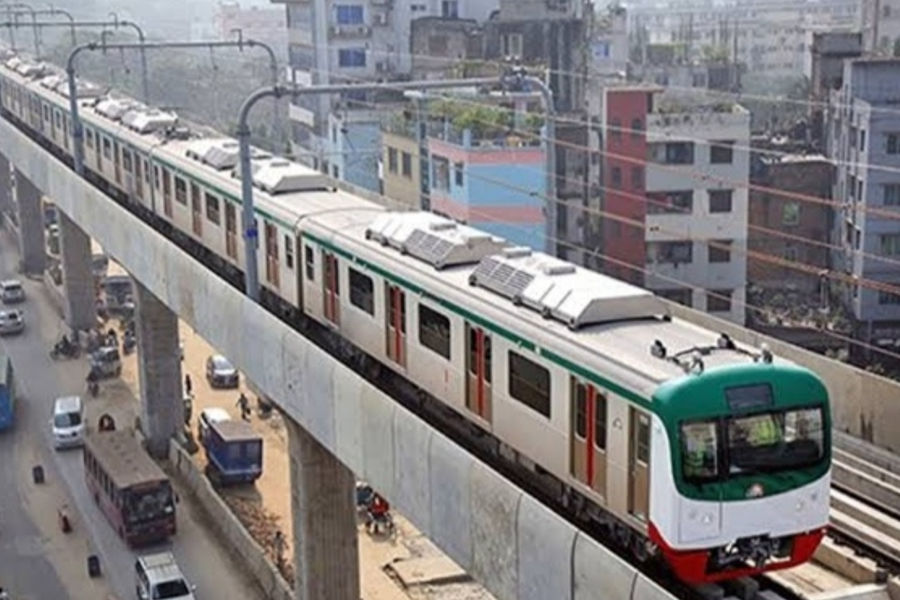
Published :
Updated :

Although the metro rail operation in Dhaka reduces carbon emission significantly, the dedicated rail company is yet to harness full benefits through a lack of initiative at its planning stage.
The Dhaka Mass Rapid Transit Company Limited (DMTCL) has been implementing four out of six mass rapid transit (MRT) lines under a much-trumpeted strategic transport plan.
Carbon emission reduction from the lone under-operation MRT-06 has been missed due to a lack of initiative since its inception, according to sources.
A recent study shows a reduction in 863,851 tonnes of carbon dioxide (CO2) emission is expected per year from MRT-01 and MRT-05 North.
Due to insufficient data for traffic forecast model, sources said, realistic carbon emission reduction per person or vehicle per kilometre in the development project proposals could not be ascertained.
MRT-01 project office recently estimated 460,502 tonnes of reduction through linear interpolation, a technique used to estimate or predict a value when you have a set of known data points and want to find a value between them.
Although the estimate was calculated based on 859,461 ridership per day from the upcoming year 2026, sources said the first underground metro is unlikely to start operation by then.
"As its physical work is yet to start, uncertainty looms large over the launch of the second metro rail soon," said an insider.
But the MRT-05 North has estimated 403,349 tonnes of CO2 reduction per year from the ridership of 752,793 per day, which is due for completion in 2028.
MRT-01 project director Mohammad Abul Kashem Bhuiyan said as the project's climate issues were not addressed at the time of beginning, accurate carbon emission cuts and its benefit from the financier or the global market cannot be done.
But he said the ridership of MRT-01 compared to MRT-05 North could have been one of the inherent advantages in this regard as modal shift of passengers from cars, buses and motorcycles and auto-rickshaws is likely.
Modal shift from these fossil fuel-based vehicles is not only likely, but also MRT's carbon footprint is quite low due to use of electric trains, hybrid brakes reducing electricity consumption.
The 31.24-km MRT-01 has been planned to be developed in both underground and elevated ways from Dhaka Airport to Kamalapur Railway Station with two underground stations and seven elevated stations.
MRT-05 North will be constructed from Hemayetpur to Notunbazar and MRT-05 South from Gabtoli to Dasherkhand.
Of them, MRT-01 and MRT-05 North have been under the procurement stage and MRT-05 South is yet to get the green light from the ECNEC.
Carbon emission reduction calculation mainly depends on traffic demand forecast model which, however, was not done at the detailed design stage.
The 20.1-km MRT-06, which is operating from Uttara to Motijheel during the last two years, has already reached very close to its estimated ridership of 500,000 before its full operation began.
The DMTCL has already missed the opportunity to claim CO2 reduction.
The Japan International Cooperation Agency (JICA) has so far provided both financial and technical support to three MRTs.
smunima@yahoo.com


 For all latest news, follow The Financial Express Google News channel.
For all latest news, follow The Financial Express Google News channel.